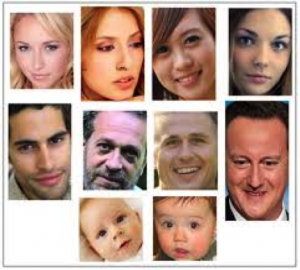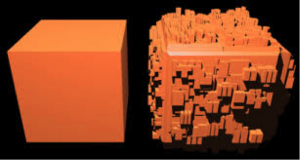Face and Object Recognition
by Kelly Petrarca
When you recognize another person’s face, you are using different visual tools to recognize that person’s face than when recognizing other objects. While most people are born with the ability to use these visual tools (some quite well, so-called super-recognizers) others lack them. People who struggle with face recognition have a disorder called prosopagnosis. Lucky for them, scientists are working to find a way to help people train themselves to become better face recognizers. Because certain objects may be similar in appearance (dog breeds, handwriting, fingerprints, and chess configurations, for instance), researchers hope that they hold the key to help train prosopagnosics to become better face recognizers. In essence, the hope is that, once someone becomes an expert at distinguishing between these non-human objects, they can develop the visual recognition skills needed to distinguish between faces. This is called the expertise hypothesis. These are not people with special abilities; they are people who, over time, have gained the ability to distinguish between certain similar-looking objects to become better recognizers.
The use of experts in experiments is difficult because experts are hard to find, expertise level cannot be controlled in an experiment, and reaching the level of expert for a skill similar to identifying faces takes a long time. Scientists have found a way to overcome this issue by having participants train to become experts with greebles. Greebles are objects designed to make a person use the same visual tools they use to distinguish faces. Participants worked with the greebles for 7 to 10 sessions. During this time, they learned to distinguish between individual greebles and become proficient enough that they are considered experts. The use of greebles to determine object recognition was a fast and easy way to make sure participants were at the same level of expertise.
The experiment, which was conducted by Constantin Rezlescu, Jason J.S. Barton, David Pitcher, and Bradley Duchaine, was designed to determine if greebles could be used to enhance both object and face recognition in participants. The effectiveness of the greebles was determined by having two prosopagnosics participants (Florence and Herschel) work with greebles and computer-generated face recognition. Florence and Herschel were compared against a control group of people who did not have issues with face recognition. Florence and Herschel and the control group worked with the greebles and computer-generated faces over eight sessions. Florence and Herschel ended up with normal performances on the greeble training while having low performances on the face-recognition training. Based on this data, greeble recognition and face recognition rely on different visual tools.
Rezlescu, C., Barton, J. J., Pitcher, D., & Duchaine, B. (). Normal acquisition of expertise with greebles in two cases of acquired prosopagnosia. Proceedings of the National Academy of Sciences, 111.
Further Reading:
Brad Pitt is Face Blind
Information about prosopagnosia research


